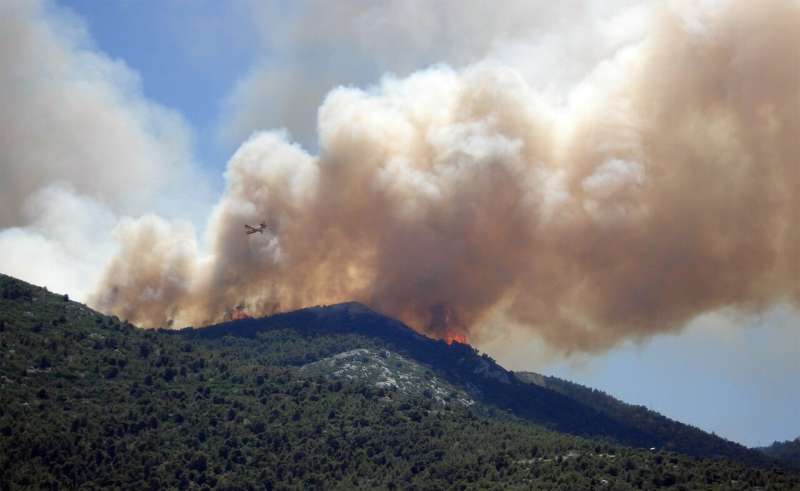April 4, 2022 report
Predicting particulate pollution levels from wildfires in a warming climate

An international team of researchers has found via modeling that unless climate mitigation efforts are stepped up, people living in the U.S. Northwest could see a tripling of particulate matter in the atmosphere by 2050 due to wildfires during the late summer months. In their paper published in Proceedings of the National Academy of Sciences, the group describes applying an empirical statistical model to fires projected by Earth System Models to make predictions about future particulate levels.
Over the past several years, the U.S. Pacific Northwest has seen more and bigger fires than in the past. The increases have been blamed on climate change that caused hot and dry conditions. In addition to destroying trees and other vegetation, fires also reduce homes, businesses, and in some cases, whole towns to ashes. As the fires burn, particulate matter of various sizes is released into the atmosphere, producing a form of air pollution. This pollution can heavily impact people not only in the area of the fire, but many miles away, as it is carried by the wind. In this new effort, the researchers note that most climate models do not account for the particulate matter released by wildfires. To rectify that, they combined data from climate models with an empirical statistical model to use as a tool in predicting wildfire emissions scenarios over the next 28 years.
In their work, the researchers created three particulate level scenarios based on the degree of global climate mitigation efforts—strong, moderate and low.
Under the strongest mitigation effort, which would see humanity reach net-zero greenhouse gas emissions by 2050, the researchers found that wildfire particulate pollution would likely still increase by 60 to 110% compared to today. If greenhouse gas emissions remain the same, however, they found that particulate pollution could double by 2050. And if greenhouse gas emissions double, then particulate pollution would be triple that of today. They note that their tool also showed that periods of wildfires in the Upper Northwest are likely to happen more often as conditions worsen. They suggest that the only way to prevent such conditions from occurring is to reduce greenhouse gas emissions.
More information: Yuanyu Xie et al, Tripling of western US particulate pollution from wildfires in a warming climate, Proceedings of the National Academy of Sciences (2022). DOI: 10.1073/pnas.2111372119
Journal information: Proceedings of the National Academy of Sciences
© 2022 Science X Network




















